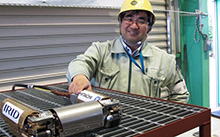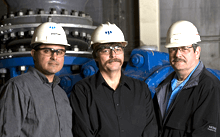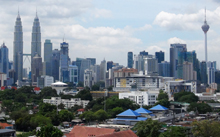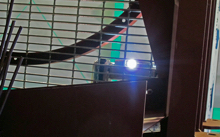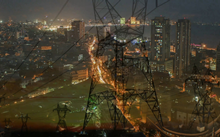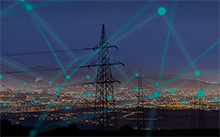Declines in electrical power quality are becoming a serious challenge, as larger amounts of renewable energy are introduced to the power grid. High-quality electricity that maintains voltage and frequency at a certain level is particularly essential for various facility or equipment. The demand for energy storage systems to overcome this challenge is on the rise.
Hitachi's energy storage system: "CrystEna"
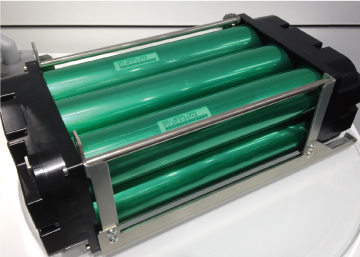
Large-capacity, lithium-ion batteries can meet a variety of needs in large electrical equipment and new power systems.
Distribution of electricity requires a continuous balancing act in adjusting supply to meet demand. If this balance becomes unstable, it causes fluctuations in frequency, and this could lead to power outages. Output of electricity from renewable energy sources such as solar and wind power generation depends on changing weather conditions and wind velocity and therefore fluctuates readily. To incorporate larger amounts of renewable energy into the grid, we need to effectively address this issue. Thus, energy storage systems with frequency regulation capabilities, along with control systems using information technology, have been gaining attention as promising solutions to maintain a stable power supply.
Hitachi has long been involved in activities in this field, extending from research and development to system integration, in addition to manufacturing materials for energy storage devices and batteries for industrial and automotive applications. Hitachi deals with a wide range of systems and can configure economical solutions for specific applications by optimizing the best energy storage system for a given application. These include advanced lead-acid batteries, which can store relatively large amounts of energy, and lithium-ion batteries, which can deliver a high level of output over a short period.
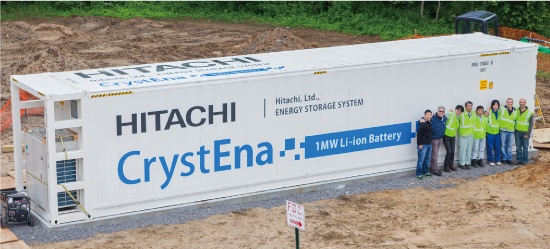
The 1-MW container-type energy storage system, "CrystEna," is the fruit of teamwork in the Hitachi group.
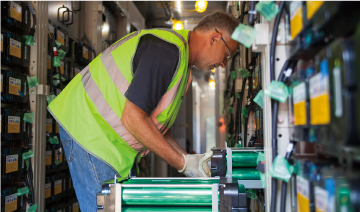
Lithium-ion batteries, characterized by long life, are expected to have a service life of around 10 years.
The United States, one of the leaders in the large-scale deployment of renewable energy, has already deregulated its electricity market, and its power grid has become open for trade. The retail electricity market is now fully deregulated in many areas. PJM (Pennsylvania, New Jersey, Maryland Interconnection), which operates transmission systems in the northeast region of the United States as the country's largest Regional Transmission Organization (RTO), has already opened the electricity market for frequency regulation.
Hitachi recognized the opportunities in this market and launched a project to develop and provide energy storage solutions in 2013.
First, Hitachi started working on the development of a container-type lithium-ion battery energy storage system as an optimal solution for frequency regulation. In the development process, Hitachi determined that reliability and having a service life of around 10 years would be critical for the system to give customers confidence to invest. Hitachi Research Laboratory developed a simulator to evaluate battery life precisely, as it would be impractical to test battery life by charging and discharging batteries over 10 years. Hitachi's Omika Works worked on improving the control system and power conditioning system, which are critical parts of the energy storage system.
Hitachi Chemical Company, Ltd. and its group company, Shin-Kobe Electric Machinery Co., Ltd. worked on improving the energy storage cells. As a result of the combined strengths and efforts of these Hitachi group companies, the 1-MW container-type energy storage system was launched as a single, integrated unit optimized for frequency regulation.
Hitachi group continues to work on extending battery life and making the system smaller. Hitachi plans to market the energy storage system in the U.S. as a significant contribution in the frequency regulation market.
Note: CrystEna is a registered trademark for the brand name representing overall energy storage system solutions made by Hitachi group. The name was created combining "Crystal" of state-of-the-art technologies in the Hitachi group and "Energy."
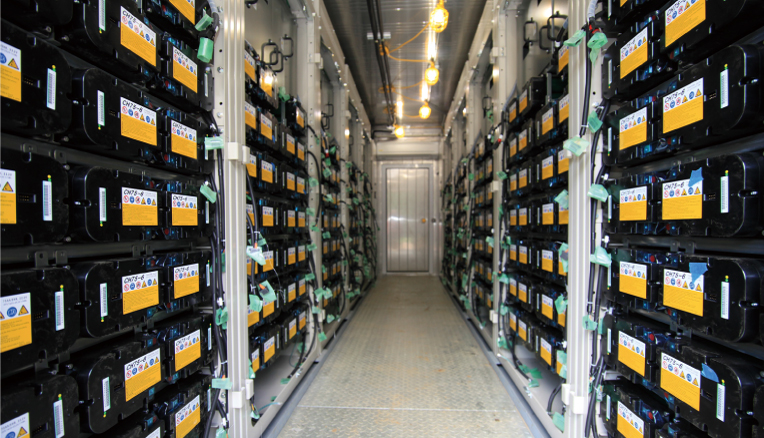
Inside the container. 1-MW power conditioning system (PCS), 450 kWh batteries and control systems.
Hitachi is not only looking to the U.S., where frequency regulation markets already exist, but also sees great market potential in the energy storage field worldwide. For example, there is already growing demand for stabilization of the electrical grid in Japan as the amount of renewable energy grows. Small-scale power grids and microgrids on islands will need energy storage solutions for balancing demand and supply as well as for utilization during peak times. Hitachi contributes to stable energy supplies, which are essential to comfortable living for people around the world, and will continue its efforts through a variety of innovative solutions, including the container-type energy storage system.
Release Date: February 2015
Solutions By: Energy Solutions Business Unit, Hitachi, Ltd.
